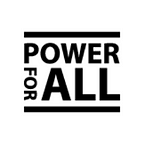3 keys to ending electricity poverty in rural India: CLEAN
India’s current electrification rate is about 200,000 households per month. At that rate, and assuming 43 million households still without electricity, the current approach would require another 18 years to achieve the government’s goal of 24/7 universal electricity access. Harihara Mohapatra, chief operating officer (COO) of The CLEAN Network, says decentralized renewable energy (DRE), which is faster, more flexible and more cost effective to deploy in rural areas, can and should be a much greater contributor to ending electricity poverty. CLEAN, whose members account for about half of the 250 DRE companies currently working in the country, believes the government must reach a consensus on the role of DRE as a mainstream energy service provider, which might mean treating private last-mile connectivity energy service providers (ESCOs) as virtual subsidiaries or franchises to the state distribution companies.
In particular, Mohapatra calls for three government actions: 1. a technology agnostic policy approach that recognizes the complementary role of DRE in grid electrification; 2. greater access to finance, especially low-cost debt (which will come from policy recognition) and 3. more investment in R&D to create new DRE applications to improve livelihoods for India’s rural poor.
Listen to the entire interview below:
